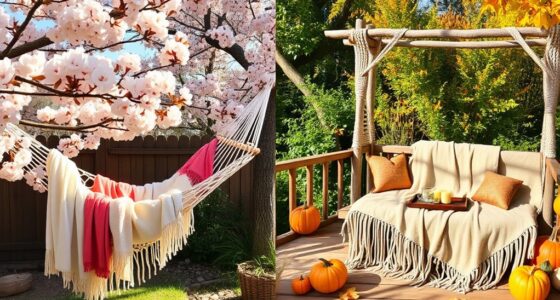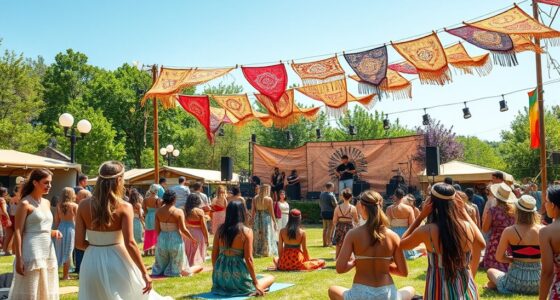Embracing a simple, bohemian lifestyle through the art of slow living means prioritizing mindfulness, authenticity, and meaningful experiences in your busy life. It encourages you to slow down, focus on what truly matters, and indulge in life’s simple pleasures—like connecting with nature and your community. By intentionally designing your days with purpose and presence, you create space for creativity and genuine connection. If you continue exploring, you’ll discover more ways to deepen your journey toward a relaxed, meaningful life.
Key Takeaways
- Embrace intentionality and mindful pacing to create a relaxed, authentic bohemian lifestyle rooted in simplicity and personal values.
- Incorporate natural elements and textures into your space to foster calmness and a connection to nature.
- Prioritize meaningful activities over busyness, cultivating creativity, reflection, and deep connections with others.
- Simplify your environment by decluttering and curating a space that reflects your free-spirited, easygoing nature.
- Build a community of like-minded individuals to share inspiration, support, and collective mindfulness in embracing slow living.
Understanding the Core Principles of Slow Living
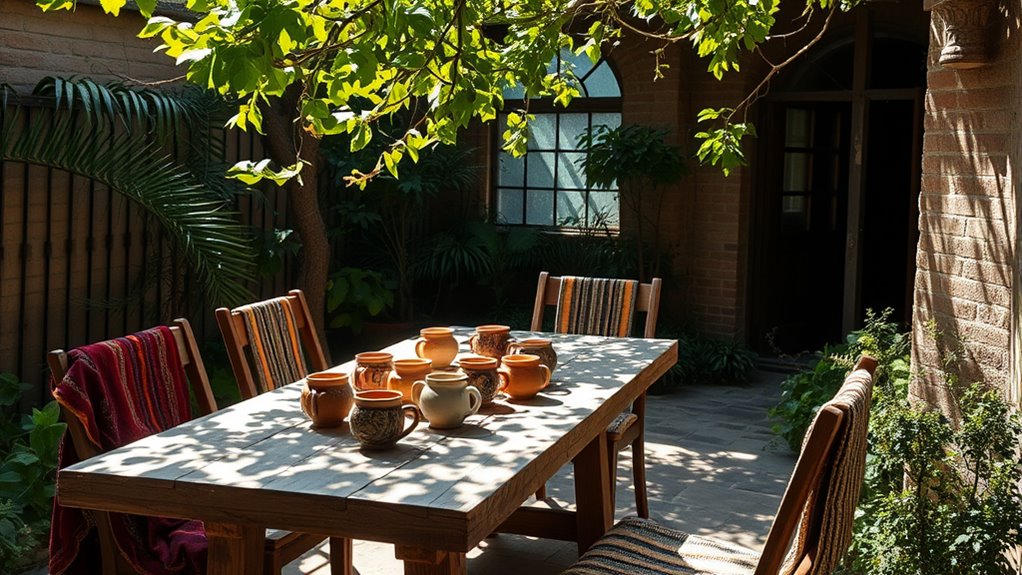
Understanding the core principles of Slow Living begins with recognizing its focus on intentionality. You choose to adopt mindful pacing in your daily routine, slowing down to savor each moment. This approach encourages simplifying life by reducing clutter, distractions, and unnecessary commitments, helping you focus on what truly matters. Intentional living means making deliberate choices that align with your values, fostering authenticity and purpose. By prioritizing meaningful activities over constant busyness, you create space for genuine connections with yourself, others, and nature. Slow Living emphasizes quality over quantity, embracing stillness and simple pleasures. This mindful approach to everyday life enhances your well-being, allowing you to appreciate the present and live more consciously. It’s about redefining success through authenticity, purpose, and gratitude. Incorporating auditory processing techniques can further enhance your ability to be present and engaged in daily experiences. Additionally, understanding vape juice expiration and proper storage practices can help maintain the quality of your favorite flavors, ensuring a more mindful and safe consumption experience. Maintaining proper headphone connection and ensuring compatibility with your devices can elevate your listening experience, allowing you to fully immerse yourself in the present moment. Cultivating positive thinking can also support a more resilient and fulfilling lifestyle, helping you stay centered amidst life’s demands. Being aware of tire pressure and adjusting it appropriately can improve comfort and performance, contributing to a more mindful connection with your environment.
The Origins and Evolution of the Movement
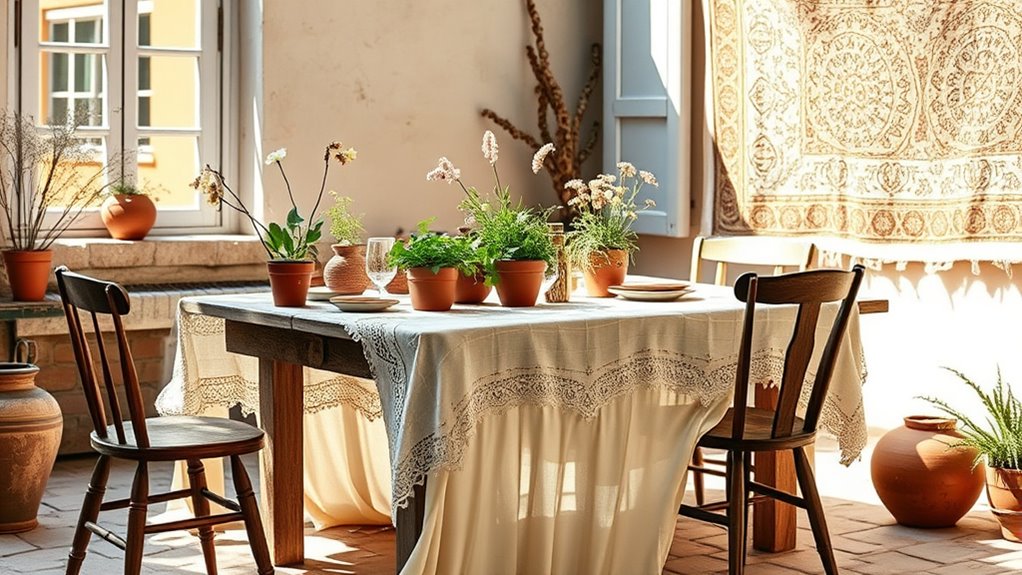
You’ll see that Slow Living began in Italy in the 1980s as a reaction to the rise of fast food chains like McDonald’s in Rome, aiming to protect local food traditions. It grew alongside the Slow Food movement, which focuses on mindful sourcing and sustainability. Over time, it expanded globally, emphasizing a deliberate, mindful approach to everyday life beyond just food. Additionally, the movement encourages embracing free, simple pleasures and a more intentional way of living to foster well-being and community connection. The emphasis on authentic living underscores the importance of valuing genuine experiences over superficial consumption. Recognizing the significance of slow-paced routines helps individuals cultivate a more balanced and meaningful lifestyle. Furthermore, adopting a growth mindset can support individuals in embracing change and cultivating resilience in their pursuit of a slower, more mindful life. Incorporating mindful practices such as meditation or journaling can deepen this commitment to intentional living.
Roots in Italy
Did you know that the Slow Living movement has its roots in Italy during the 1980s, emerging as a response to the rapid spread of fast food chains like McDonald’s in Rome? You’re part of a movement that seeks to preserve Italy’s rich local traditions and culinary heritage. It was closely linked to the Slow Food movement, which emphasized sourcing, growing, and preparing food with care, locality, and sustainability. The term “Slow” stands for Sustainability, Locale, Organic, and Whole, reflecting eco-friendly values. Italian cities like Florence and Bologna became cultural hubs, blending culinary, social, and lifestyle practices. This approach resonated beyond Italy, inspiring a global shift toward mindful living rooted in community and tradition. Embracing local traditions and celebrating regional culinary practices remain core to this lifestyle. Additionally, the movement encourages cultivating a deeper connection to local environments and supporting small-scale artisans and producers. Recognizing the importance of sustainable practices, many communities have adopted eco-conscious habits that reinforce the movement’s principles. Moreover, understanding the broader context of International Finance can help individuals and communities make informed choices that support sustainable development and economic stability. Incorporating principles of mindful consumption can further deepen the connection to a slow, intentional way of living.
Slow Food Movement
The Slow Food Movement began in Italy during the 1980s as a direct response to the aggressive spread of fast food chains like McDonald’s in Rome, aiming to protect and celebrate regional culinary traditions. You’re encouraged to focus on sourcing, growing, and preparing food with care, emphasizing locality and sustainability. The movement’s core principles are encapsulated in the acronym SLOW—Sustainability, Local, Organic, Whole—highlighting its dedication to eco-friendly, traditional practices. Officially founded in 1989 with the creation of the Slow Food organization, it promotes mindful eating, community engagement, and ecological responsibility. Over time, the movement has grown globally, advocating for a balanced approach to food that honors local flavors, respects the environment, and resists the fast-paced, mass-produced culture. The emphasis on local food sources helps preserve biodiversity and cultural heritage. Incorporating traditional food preparation methods can further support the movement’s goals of sustainability and cultural preservation. AI security advancements can also help ensure the integrity and authenticity of local food sources by protecting against digital threats and misinformation.
Global Growth Trends
- A worldwide embrace of environmental sustainability and authenticity, driven by a collective desire to reconnect with nature and genuine experiences.
- Increased focus on mindfulness in daily routines, encouraging individuals to cultivate awareness and presence in their activities.
- Broader adoption across travel, work, and personal life, as people seek a more meaningful and balanced lifestyle.
- The integration of sound healing science practices into wellness routines has gained popularity as a holistic approach to health.
- As part of this movement, the use of holistic health practices has expanded, emphasizing the importance of aligning mind, body, and spirit for overall well-being.
- The practice of creative practice has become a valuable tool for enhancing mental clarity and emotional resilience within slow living philosophies.
- The incorporation of sustainable materials into everyday life supports eco-conscious choices and aligns with the movement’s values.
- Additionally, a focus on local and handmade products encourages community support and reduces environmental impact.
Common Misconceptions and Clarifications
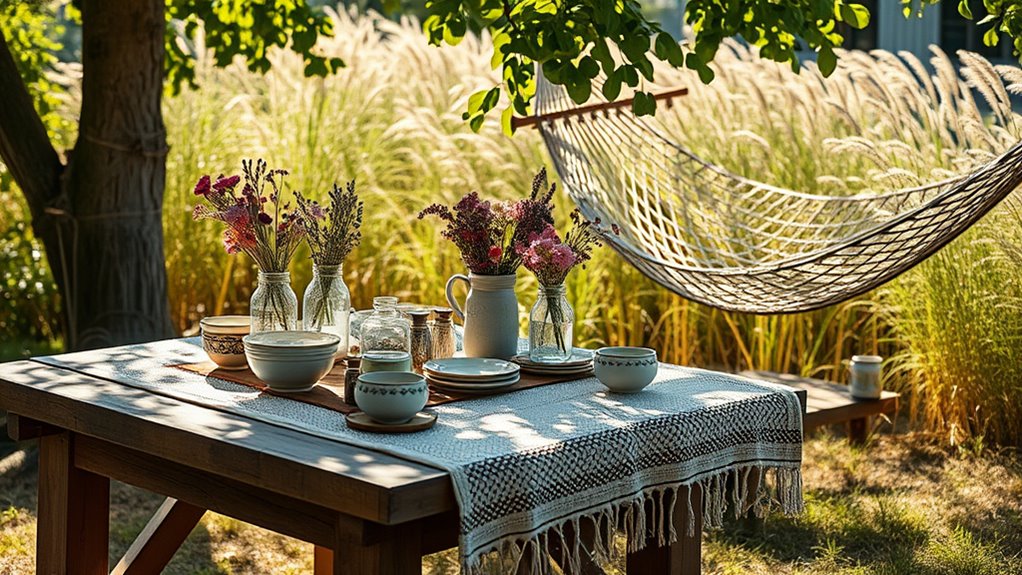
Many people think Slow Living means doing everything slowly or avoiding activity, but it’s really about aligning your pace with your purpose. It’s a common myth that Slow Living requires rural self-sufficiency or sacrificing success, yet it can fit into any environment and boost fulfillment. Remember, slowing down isn’t about inactivity; it’s about purposeful engagement that’s accessible for everyone. Incorporating mindful practices can help cultivate this balanced approach to life and foster a growth mindset that supports continual personal development. Understanding the importance of intentional design in your environment can also enhance your ability to live slowly and meaningfully, especially through creative indoor gardening with unique planters that inspire relaxation and mindfulness.
Myths vs. Reality
Despite common misconceptions, Slow Living isn’t about rushing or doing everything at a snail’s pace; rather, it’s about intentionally choosing the right speed for each activity. Many believe it means avoiding activity altogether, but it’s actually about engaging mindfully with purpose. Some think it discourages productivity, yet many find it enhances focus and quality. Others assume technology should be avoided, when in reality, mindful use of devices can support a slower, more intentional life. To envision this:
- You spend time savoring each meal instead of rushing through it.
- You set aside moments to reflect, not just keep busy.
- You use technology consciously to simplify rather than complicate life.
Understanding these misconceptions helps you embrace the true essence of Slow Living: mindful pacing and intentionality.
Doing at the Right Pace
Understanding what slow living truly entails helps clear up common misunderstandings about doing things at the right pace. It’s not about rushing or doing everything slowly for its own sake, but about adopting a purposeful speed that aligns with your intentions. Slow living emphasizes mindful engagement and intentional action, allowing you to focus fully on each activity without feeling hurried. Many mistake it for laziness or avoiding work, but it’s actually about quality, presence, and maximizing your clarity and focus. Slowing down doesn’t reduce productivity; it often enhances it by minimizing distractions and mental clutter. This approach is adaptable and beneficial for everyone, regardless of lifestyle or environment. Doing at the right pace means respecting your rhythm and choosing actions that serve your overall well-being.
Accessibility for All
What does accessibility truly mean within the practice of slow living? It’s about making mindful choices that everyone can incorporate, regardless of their background or environment. Accessibility isn’t limited to rural or minimalist settings; it’s a flexible mindset anyone can adopt. Slow living emphasizes doing activities with purpose and intentionality, not perfection or a specific pace. It’s simple to integrate into urban, busy lifestyles without feeling overwhelmed.
- Envision a city dweller taking moments to breathe during a hectic day, embracing the simple act of being present
- Picture someone using technology mindfully, balancing screen time with offline joys
- Imagine creating routines that fit your unique life, making slow living accessible for all backgrounds and situations
Practical Benefits of Embracing a Slower Pace

Embracing a slower pace offers tangible benefits that can transform your daily life. When you slow down, you become more mindful, appreciating simple pleasures and reducing stress and anxiety. This shift enhances your overall well-being, fostering a calmer mind and a healthier outlook. Practicing intentionality in your routines improves focus, making your work more meaningful and productive. A deliberate pace also deepens connections with loved ones and your environment, strengthening relationships and community bonds. Additionally, slowing down creates mental space, boosting your creativity and problem-solving abilities. By embracing simplicity and mindfulness, you cultivate a more balanced, fulfilling life, allowing you to enjoy each moment fully and find greater happiness in everyday experiences.
Simple Strategies to Begin Your Slow Living Journey
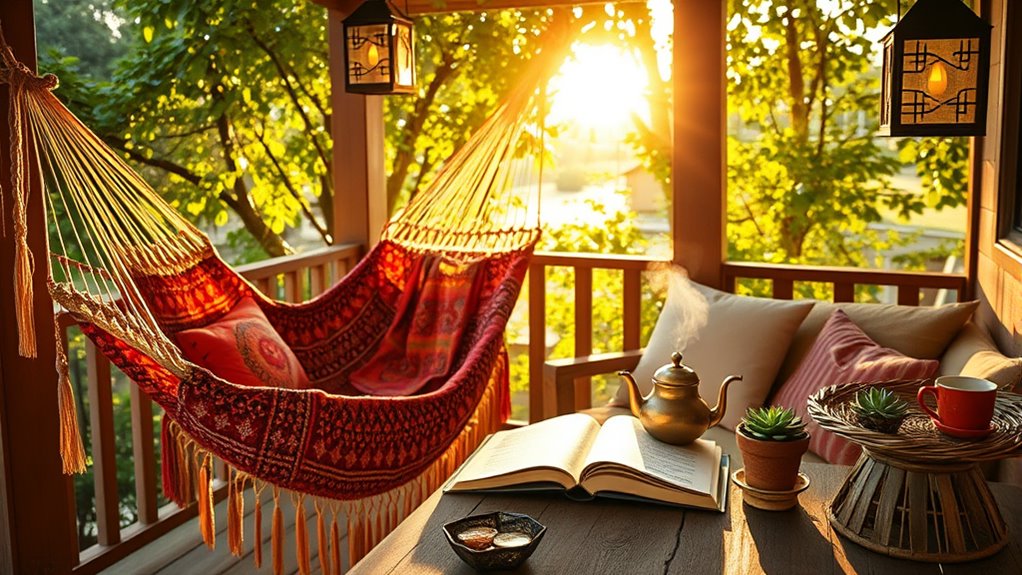
Getting started with slow living doesn’t have to be overwhelming; simple, intentional steps can make a meaningful difference. Begin by dedicating 10-15 minutes daily to mindful activities like journaling, meditation, or gentle outdoor walks to cultivate presence. Simplify your schedule by prioritizing essential tasks and learning to say no to non-essential commitments, reducing overwhelm. Incorporate small rituals, such as savoring your morning coffee or preparing meals from scratch, to foster intentionality in your routines. Limit screen time by setting specific periods for device use and taking regular breaks to reconnect with your surroundings. Gradually declutter your space and schedule, creating a calmer environment that supports slow living and personal well-being. These small shifts promote mindfulness, simplicity, and a more intentional lifestyle.
Essential Books and Resources for Inspiration

Are you seeking meaningful guidance to deepen your slow living practice? These essential books and resources can inspire you to embrace a more mindful, simple, and intentional lifestyle. *In Praise of Slowness* by Carl Honoré reveals how slowing down enhances health and happiness, encouraging you to prioritize quality over speed. *Essentialism* by Greg McKeown helps you focus on what truly matters, aligning perfectly with the principles of slow living. *Slow* by Brooke McAlary offers practical rituals to cultivate mindfulness and simplicity in everyday routines. Similarly, *Destination Simple* emphasizes creating meaningful habits that foster a deliberate, relaxed pace. These books serve as valuable tools, inspiring you to live intentionally and savor each moment as you progress into a more mindful, simple way of life.
Inspiring Quotes to Motivate Your Lifestyle Shift

Inspirational quotes about slow living can serve as powerful reminders to prioritize mindfulness and intentionality in your daily life. They encourage you to savor each moment and find joy in simplicity. For example, Carl Honoré’s words remind you that “speed is the enemy of quality,” urging you to slow down and focus on what truly matters. Brooke McAlary encourages embracing stillness by appreciating what is, not rushing toward what could be. These quotes highlight that slowing down fosters deeper connections, authentic experiences, and gratitude for the present. Visualize yourself:
- Pausing to breathe and reflect amidst a busy day
- Cultivating mindfulness in everyday routines
- Recognizing the beauty in simple, intentional moments
Let these words inspire your shift toward a calmer, more meaningful lifestyle.
Incorporating Nature and Mindfulness Into Daily Routines
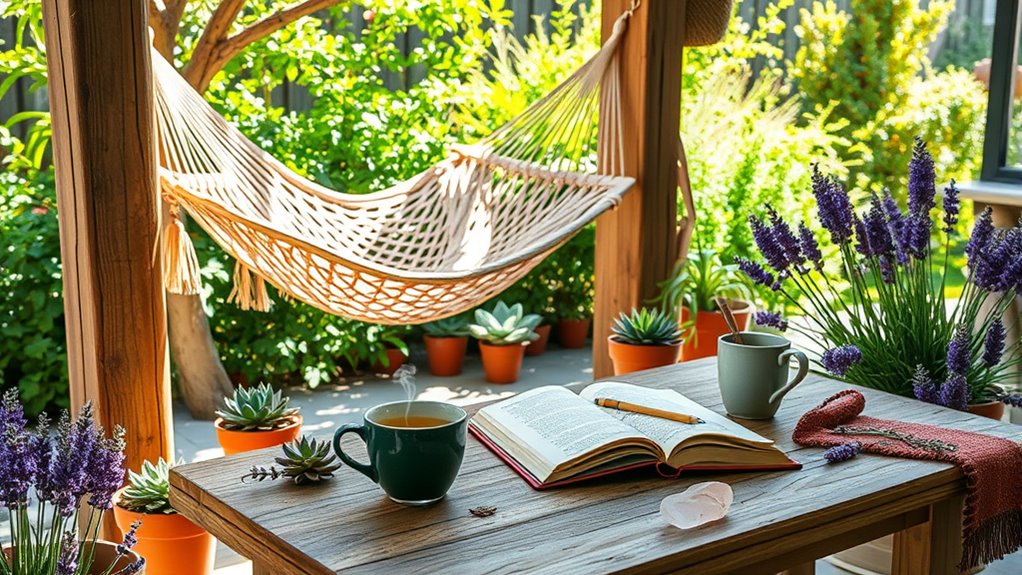
Have you considered how incorporating nature into your daily routines can enhance mindfulness and promote a slower, more intentional pace of life? By engaging in activities like outdoor walks or tending to a garden, you invite natural elements into your day, grounding you in the present moment. Practicing mindful observation of trees, water, or flowers helps sharpen your awareness and quiet mental clutter. Spending time in natural settings increases sunlight exposure, boosting your mood and supporting healthy circadian rhythms, which leads to better sleep and overall well-being. Incorporating natural sounds, sights, and smells deepens relaxation, fostering a serene, slow-paced lifestyle. These simple acts nurture a genuine connection to nature, inspiring sustainable choices and a more mindful approach to everyday living.
Fostering a Community of Like-Minded Souls
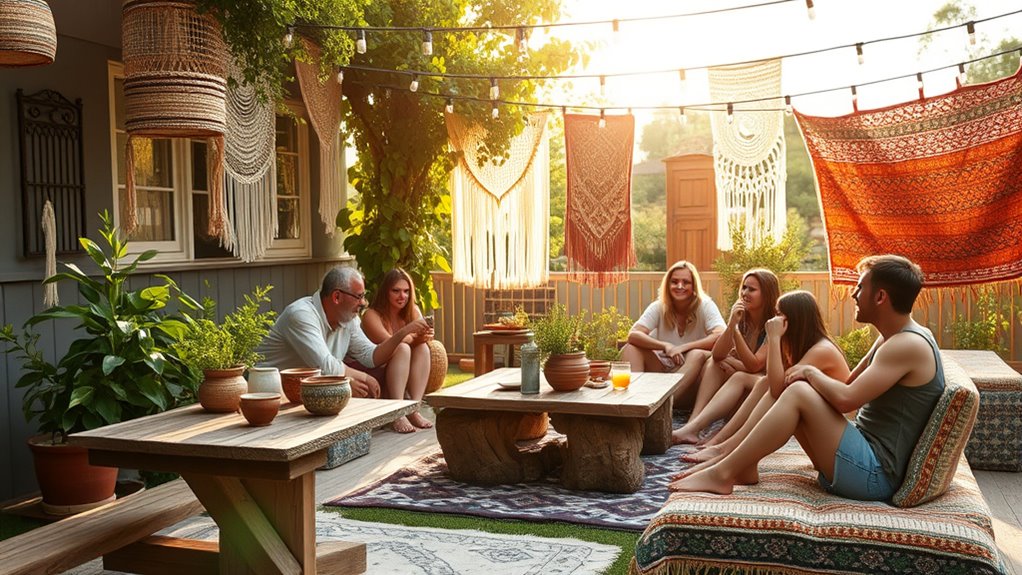
Fostering a community of like-minded souls can profoundly deepen your slow living journey by providing support, shared inspiration, and accountability. When you connect with others who value simplicity and mindfulness, you create a space for growth and encouragement. This community can be built through online platforms, local meetups, or social groups, where you exchange experiences, advice, and resources. Participating in communal events like workshops, retreats, or discussion circles helps strengthen bonds around shared values. Supporting slow living and bohemian influencers amplifies collective awareness while inspiring your own practices. A strong community nurtures a sense of belonging, reduces feelings of isolation, and keeps your motivation high to live intentionally and peacefully.
- Gather around fireside chats or potlucks that celebrate simplicity.
- Join or create local meetups focused on mindfulness and creativity.
- Share stories and tips on social media to inspire others and foster connection.
Frequently Asked Questions
What Is the Art of Slow Living?
The art of slow living invites you to intentionally slow down your daily routines, savoring simple moments and practicing mindfulness. You focus on quality over quantity, cultivating presence, gratitude, and deeper connections with yourself, others, and your environment. By reducing distractions like digital overload, you create space for reflection and authentic experiences. Ultimately, it’s about aligning your lifestyle with your values, prioritizing well-being, authenticity, and a peaceful, fulfilling pace of life.
What Is the Secret to Slow Living?
The secret to slow living is like discovering a hidden treasure in your everyday routine. You focus on being present, savoring simple moments instead of rushing through them. By intentionally simplifying your routines, reducing digital distractions, and practicing gratitude, you create space for reflection and connection. Small habits like mindful breathing and outdoor time help you embrace a relaxed, authentic life, shifting your focus from productivity to meaningful living.
What Is the Principle of Slow Living?
The principle of slow living is all about intentionally slowing down your daily routines to focus on mindfulness and purpose. You value quality over quantity, savoring each moment instead of rushing through tasks. By aligning your habits with your true values, you create a more meaningful, less stressful life. You cultivate awareness through practices like meditation, connecting with nature, and prioritizing rest, helping you enjoy life’s simple pleasures fully.
What Is the Psychology of Slow Living?
Imagine pausing amidst a busy day, feeling the rush slow to a gentle ripple. That’s the psychology of slow living—centered on mindfulness and present-moment awareness. It helps you manage emotions better, lowers stress hormones, and clears your mind. By embracing slower routines, you boost gratitude, self-control, and overall well-being, transforming everyday moments into meaningful experiences that foster genuine happiness and authenticity.
Conclusion
Embracing slow living isn’t just a trend—it’s backed by science showing it can boost your well-being and reduce stress. When you prioritize mindfulness, nature, and simplicity, you tap into a timeless way of living that fosters genuine connection and peace. So, why not test the theory? Start small, trust the process, and discover how embracing a slower pace can transform your life into a richer, more meaningful journey.



